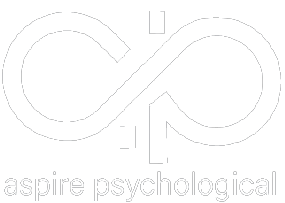Cognitive behavioral therapy (CBT) is one of the most prevalent therapies in modern psychology. Dating back to the 1960s, CBT is also one of the most rigorously studied therapies. More than 2,000 studies have demonstrated its effectiveness in helping people overcome a variety of mental health challenges.
Aspire Psychological makes use of cognitive behavioral therapy where appropriate. We practice it in accordance with all the latest principles and best practices. We would be happy to answer any questions you might have about it during your next session, whether in person or via telemedicine.
Six Decades of Therapeutic Benefits
CBT was first proposed by the late Dr. Aaron Beck in the 1960s. Throughout the 60s and 70s, Beck gradually developed CBT through research and experience. What he first proposed has become one of the most sought-after talking therapies over the last six decades.
What is it that makes CBT so different? Its focus. Where most of psychology looks to the past to understand why a patient thinks and feels a certain way, CBT concentrates on the present. It is designed to help patients understand how they currently think and feel. By taking ownership of present thoughts and feelings, patients can learn new thought patterns that can ultimately prove to be life changing.
Thoughts and Feelings Are Connected
During his early research, Dr. Beck observed that patients diagnosed with depression seemed to have similar negative thoughts about themselves and the world around them. He also observed that such thoughts seemed to be automatic. Through his observations, Beck came to understand that thoughts and feelings are intrinsically connected.
What a person thinks on a particular topic influences how they feel about it. Likewise, strong feelings about a particular topic or experience influence a person’s thoughts on that topic or experience.
This led to Dr. Beck developing a cognitive therapy designed to help patients identify and evaluate the automatic thoughts they were experiencing. As patients got better at recognizing negative thoughts and perceptions, they also found themselves better able to think more realistically. They experienced emotional improvements as well. From this research, CBT was born.
How We Use It Today
Cognitive behavioral therapy is a talking therapy. Patient and therapist sit together during sessions with the time spent on constructive conversations. The conversations often involve open ended questions that encourage a patient to think through emotions, thoughts, and perceptions. Once a patient recognizes what’s going on in their mind, new thought patterns can be introduced.
It should be noted that Aspire Psychological takes advantage of numerous tools within the framework of traditional CBT. Examples include:
- One-on-one discussions.
- Role playing.
- Journaling.
- Therapist feedback.
- Calming exercises.
- Homework assignments.
All therapy sessions are conducted in a safe and welcoming environment purposely designed to encourage patients to share their thoughts and feelings. We work hard to establish a relationship of trust with each and every patient so that CBT can be utilized to maximum advantage.
Helping Patients Figure It Out
By focusing therapy on present thoughts and feelings, therapists give patients an opportunity to figure out for themselves why they think and feel the way they do. This is invaluable in treating conditions ranging from panic disorders to social phobias to anxiety.
Rather than a therapist telling the patient what to do, the patient is led through a process of figuring it out for himself. There is tremendous power in that. A patient who figures things out is able to embrace new thought patterns that lead to positive emotions and more realistic perceptions. That’s the whole point.

